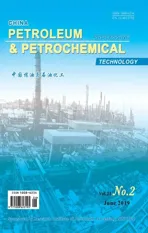Enhanced Anti-Wear Property of Low Viscosity Engine Oil for Sequence IVB Engine Test Meeting the GF-6 Specification
2019-07-15XieXinJiaQiulianZhangJianrong
Xie Xin; Jia Qiulian; Zhang Jianrong
(SINOPEC Research Institute of Petroleum Processing, Beijing 100083)
Abstract: The purpose of this research is to determine the anti-wear capability of new advanced low viscosity engine oil to meet the Sequence IVB requirement of ILSAC GF-6 specification, which envisages that the first certification will be realized in 2020. The anti-wear performance of the aged candidate GF-6 engine oils was evaluated using the laboratory bench test rigs such as the Falex Pin & Vee Block test machine and the high frequency reciprocating rig (HFRR). The worn surfaces were analyzed by X-ray photoelectron spectroscopy (XPS). The remarkable anti-wear performance of the developed GF-6 engine oil was also confirmed in the Sequence IVB test. The results indicate that by appropriately selecting and balancing the calcium detergent additives the wear loss of cam and tappet determined in the Sequence IVB test at low temperature could be significantly reduced. The time for occurrence of the intersection of the base and acid values corresponds well with the increase of wear of cam tappet of the IVB engine test.
Key words: engine oil; GF-6; Sequence IVB; anti-wear; valvetrain wear
1 Introduction
Environmental protection and energy saving are the two major concerns today all over the world. Powertrain systems with good energy efficiency of hybrid electric vehicles(HEVs) and electric vehicles (EVs) are being put on the market mainly in Japan, China, America, and Europe for the purpose of improving fuel economy. However, global vehicles, which are powered by the internal combustion engines (ICE), still account for a vast majority of the overall vehicle population. Accordingly, from the standpoint of reducing CO2emissions, improving the fuel economy of the ICE-equipped vehicles remains a critical issue.
Ways of improving ICE fuel economy include increasing the thermal efficiency, reducing the pumping losses, and lowering the friction. To meet these requirements, engine manufacturers have been implementing new solutions into the market such as engine downsizing and the use of lower viscosity engine oils. On the one hand, engine downsizing has the benefit of improving the overall engine efficiency by increasing the engine operation under medium and high loads. On the other hand, reducing engine oil viscosity can reduce the engine friction losses by decreasing the oil film thickness in lubricated contacts.In this connection, progress has been made in various areas related to lubricating oils[1-3]. New low viscosity engine oil grades have been newly established in the SAE J300 viscosity classification such as SAE 16 in 2013[4].The next global engine oil specification to be released in next year is ILSAC GF-6. The formulation of passenger car motor oils (PCMO) plays a critical enabling role in engine technology developments. To help ensure that motor oils will keep pace with the accelerating technology, engine oil specifications are regularly updated to incorporate additional performance requirements[5-7].
The core of GF-6 specification is geared around turbocharged gasoline direct-injection engines (TGDI).A primary benefit of turbocharged GDI engines is their ability to generate high levels of power at relatively low operating speeds. Some survey shows a significant market share increase of SAE 0W-20 oil and SAE 5W-20 oil.Low viscosity 0W-20 oil becomes popular and its market share of PCMO in China reached 8% in 2018, compared to around 1% during the last five years. In general, reducing the viscosity of engine oils has two principal adverse effects: (1) The oil consumption increases due to greater oil vaporization; (2) The wear increases owing to the reduction of the oil film thickness. Owing to that reason, there is a need for low viscosity engine oils having qualities that can meet severe anti-wear requirement at the cam-lift parts[8-10].In GF-6 specification, the low-temperature valvetrain wear protection has been determined using the Sequence IVB test, which is already available to replace the sequence IVA test[11-12]. This paper aims to demonstrate that innovative additive package for GF-6 specification,specifically the detergent combination, can help to improve wear protection when it is associated with appropriate additive system, thereby facilitating the use of lower-viscosity engine oil to improve the fuel economy.Upon using HFRR, the Falex friction simulation test method and the IVB EOT (end of test) oil analysis are adopted to study the requirements of IVB for oil friction and other properties, and these rules will be very helpful to the development of high-performance oil formulations.2 Experimental
2.1 Materials
Three lubricant formulations were used for the friction bench tests and the sequence IVB test to evaluate anti-wear ability at low temperature in a bid to develop the new advanced oil formulation that can meet the GF-6 specification requirement. The technical data of these lubricants are listed in Table 1. The reference oil A was selected as the low wear discrimination oil with good oxidation and wear performance. The difference between the prototype GF-6 oil 1 and the prototype GF-6 oil 2 is in the use of two kinds of detergent combinations. Except this difference, both oils use the same group III base stock, the same viscosity modifier and the same dosage and composition of other additives.
2.2 Oil aging bench test
A self-established high temperature oxidation bench test was employed to study the ageing of candidate oils. The test uses a LAWLER Model HT-342-12 oxidation stability bath equipped with oxidation cells.The test conditions included hanging an iron coupon(25 mm×25 mm×0.5 mm) in 180 ml of test oil, which was bubbled with 25 mL/min of oxygen gas through the oil. The oil was maintained at 165 °C for 20 h.
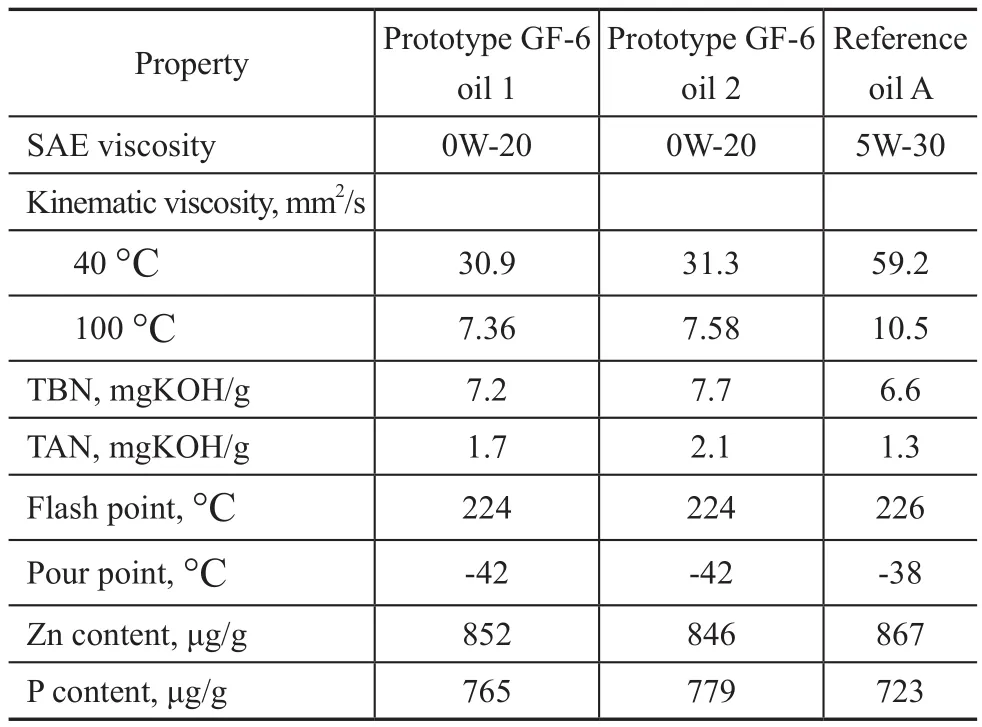
Table 1 Physical and chemical property of three engine oils
2.3 Tribological test- Falex Pin & Vee blocks
At the initial phase of the study a Pin & Vee blocks bench test was used to measure the anti-wear performance of the different aged candidate oils. After a 5 min runningin period, the test runs were conducted for 60 min under a load of 1 347 N and a pin speed of 290 rpm. At the end of the test the weight loss of Pin and two Vee blocks was measured. It is important to note that this measurement is useful for screening the low temperature anti-wear performance of engine camshaft, which can simulate the similar rotating and sliding motion form.
2.4 Tribological test - PCS HFRR
A high frequency reciprocating rig (HFRR) was used to evaluate the wear performance of engine oils under boundary lubrication conditions. Figure 1 shows the schematic ball-on-flat contact of the rig. Both ball and disk are made of AISI 52 100 steel. The lubricant temperature was controlled by a heater block underneath the oil bath. A maximum reciprocating velocity of 40 mm/s and a normal load of 9.8 N were applied for the HFRR tests. The initial contact stress was about 1.6 GPa. The lubricant temperature was maintained at 50 °C during the test,to simulate the same temperature of engine oil experienced at the Sequence IVB test. The test duration was 1 h.
The wear scar on the steel disk was measured by using a three-dimensional morphology apparatus along the cross section of the wear scar. The wear sectional depth was measured by this instrument.
2.5 Sequence IVB engine test
The Sequence IVB engine valvetrain wear test is the engine test in compliance of the ILSAC GF-6 specification, which evaluates the ability of the test engine oil to reduce valvetrain wear at low temperature.The Sequence IVB test uses a Toyota 2NR-FE water cooled, 4 cycle, in-line cylinder, 1.5 liter engine as the test apparatus, with a total running duration of 200 hours. The engine incorporates a dual overhead cam, four valves per cylinder (2 intake valves; 2 exhaust valves), and the direct acting mechanical bucket lifter valvetrain design. Figure 2 shows the appearance of the Sequence IVB engine test.
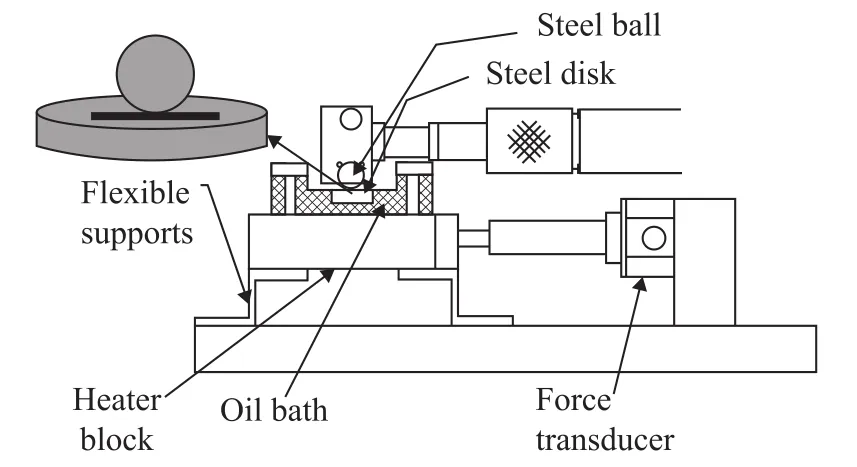
Figure 1 Ball-on- flat contact for HFRR test

Figure 2 Sequence IVB engine test using Toyota 2NR-FE engine
For increasing the wear of cams, the intake camshaft of Toyota 2NR-FE engine was modified. The modified cam lobe profile had reduced valve lift and was designed for lower oil entrainment (see Figure 3). Surface hardness of the intake camshaft was reduced from HV700 to HV450.
3 Results and Discussion
3.1 Falex Pin & Vee blocks wear test
According to the experience of passing the Sequence IVA engine test, internal studies have demonstrated the relevant correlations between this Falex test and the cam wear engine test. The chemistry of anti-wear additive must be carefully selected. In this study the anti-wear research is extended to other surface active additives such as detergents and shows that the use of different detergent combination requires a fine tuning of the GF-6 engine oil formulation.
Following a screening process based notably on the Pin and Vee block wear test, a complete additive package has been selected to formulate the prototype GF-6 0W-20 engine oils. Both formulations of the prototype GF-6 oil 1 and GF-6 oil 2 are based on the same viscosity modifier, the same group III base oil, and almost the same additive package. The only difference is in the two kinds of detergent combinations. Kinematic viscosity values at 100°C of the finished lubricants and the base oil blends are very similar, and so does the HTHS value. The three oils were degraded and aged through the 2.2 oil aging bench test. Figure 4 presents the wear performance of the above aged two candidate GF-6 0W-20 engine oils and the aged reference oil, which is subject to rotational rubbing on fresh steel surfaces. In Figure 4, the use of new detergent combination in the prototype GF-6 oil 2 can greatly decrease the weight loss of Pin and two Vee blocks, as compared to the prototype GF-6 oil 1. The result shows that the use of appropriate and special detergent combination can improve the anti-wear performance.
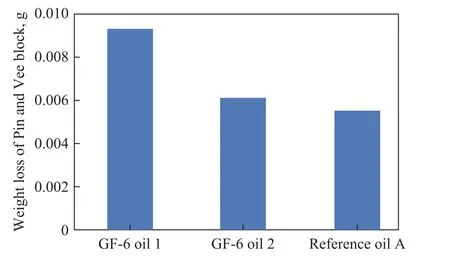
Figure 4 Results of the Pin & Vee block wear tests
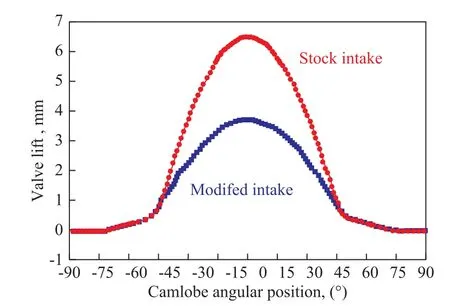
Figure 3 Modified intake camshaft profile of Toyota 2NRFE engine
3.2 HFRR wear test
Many additives have both remarkable advantages and some unexpected disadvantages of performance for engine oil. For example, the metal detergent has good detergency capacity at high temperature, but it has bad capacity to keep the non-soluble species in suspension and to avoid their deposition on the metal surfaces in the engine.
The three oils were degraded and aged through the 2.2 oil aging bench test. Figure 5 compares wear results of engine oils tested at 50 °C and a load of 9.8 N with 1.0 mm of stroke for one hour. Figure 5 presents the 3D morphology and profile of wear scar produced on the steel disk from the HFRR test for two aged candidate GF-6 0W-20 engine oils and the aged reference oil. In Figure 5(d), the profile of each wear scar was measured at the deepest positions of each wear scar. The peaks on both sides of the scar were produced due to the plastic deformation of the softer disk by the indentation of the harder steel ball under the applied normal load. The HFRR tests can simulate the severe wear at low temperature (50 °C) under boundary lubrication conditions.The prototype GF-6 oil 1 produces the highest wear among these evaluated oils as shown in Figure 5(d). The prototype GF-6 oil 2 performs better than the prototype GF-6 oil 1.
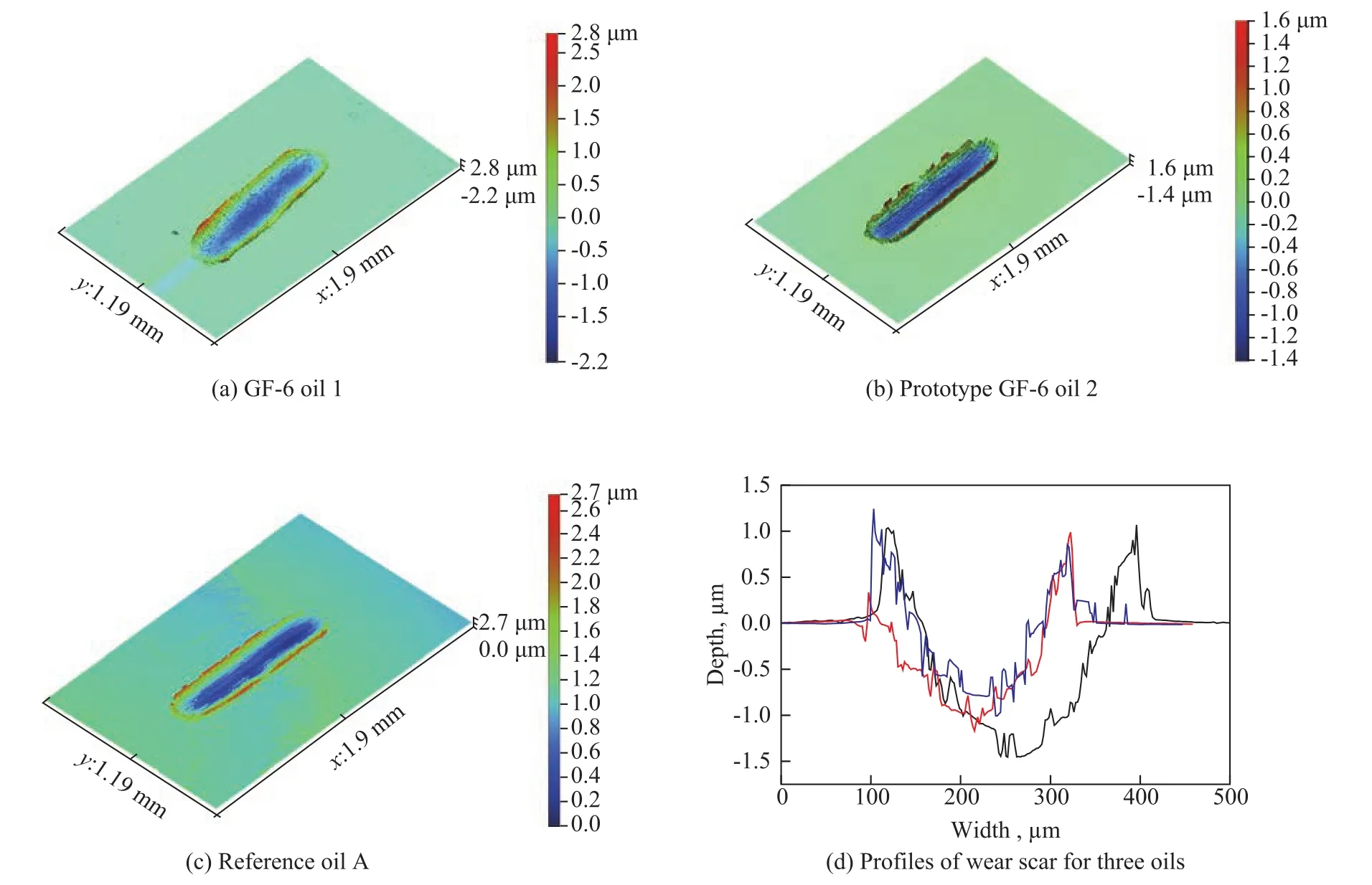
Figure 5 3D morphology and profile of wear scar on steel disk at HFRR wear test
3.3 Surface analysis of XPS for wear scar of HFRR disk
To understand the origins of the wear protection induced by engine oil, it was essential to concentrate analysis on the wear scar. Table 2 and Figure 6 give the XPS analytical results of the worn surfaces of steel disks. The surface elemental composition and chemical state were analyzed.Table 2 shows that calcium, phosphorus and nitrogen elements are deposited on the worn surface, indicating that the three elements have been involved in the tribochemical reaction.According to the XPS results, three elements (carbon, oxygen,and iron) are main components of the surfaces of the three wear scars. In Figure 6(a), the spectrum of Ca2p shows a peak at 347.4 eV, which can be attributed to CaSO4and CaS.And in Figure 6(b), the spectrum of P2p shows a peak at 133.5 eV, which can be attributed to Ca2(PO4)3. The peak of N1s around a binding energy of 399.8 eV may be attributed to -C-N- or R-NH2. Besides these analysis, the spectrum of S2p shows a peak at 161.9 eV, which corresponds to sulfides,and it shows a peak at 169.5 eV corresponding to sulfates. In Figure 6, both Ca2p and P2p spectra of the prototype GF-6 oil 2 show distinctly strong peaks and the concentrations of Ca2p and P2p on the surface were obviously higher than those of the prototype GF-6 oil 1 and the reference oil A,indicating that a greater amount of Ca and P tribochemical products was formed on the GF-6 oil 2 lubricated surface. So use of the GF-6 oil 2 may generate higher amount of wearresistant chemical layer, leading to its more effective antiwear performance. The enhancement of anti-wear ability is caused by the formation of complex boundary lubrication film resulted from the adsorption and complicated tribochemical reactions of additives on the worn surface[13-16].

Table 2 Atomic percentage of Ca , P and N elements of the worn surface lubricated by three engine oils
3.4 Sequence IVB wear test of GF-6 engine oil
The Sequence IVB valvetrain wear test evaluates lubricants for low-temperature valvetrain wear protection in overhead cam engine configurations for the ILSAC GF-6 engine oil category. The test sequence is repeated for 24 000 test cycles. The Toyota engine selected for the new test had no field performance deficiencies related to valvetrain wear. Therefore, changes in engine hardware and testing conditions that are more severe than typical service applications were necessary to generate enough wear on valvetrain components to discriminate between different lubricant formulations. The enginedynamometer test stand and the fluid conditioning module were consolidated into a single test platform known as the Golden Stand. The concept of the Golden Stand was to minimize the differences between stands among the laboratories, in order to effectively improve the test precision across the industry. Table 3 shows the distinct difference of technical data between the sequence IVB and the sequence IVA, which is the previous generation of valvetrain wear engine test. Upon taking into account the running time, the degradation degree of engine oil and test procedure, the sequence IVB test imposes more severe requirement for engine oil than the sequence IVA test.
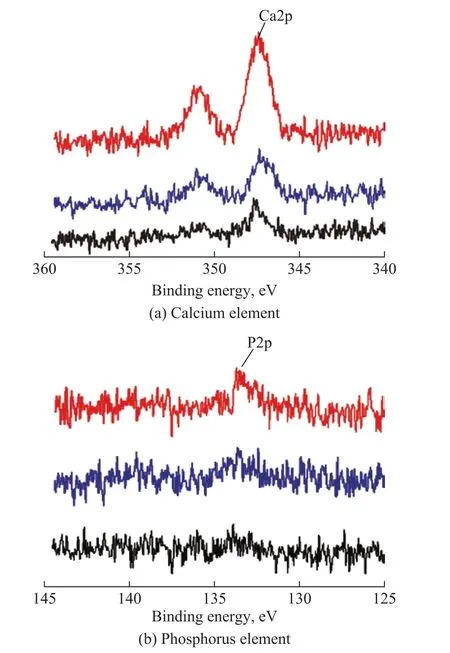
Figure 6 XPS spectra of typical anti-wear elements on worn surfaces lubricated by three oils
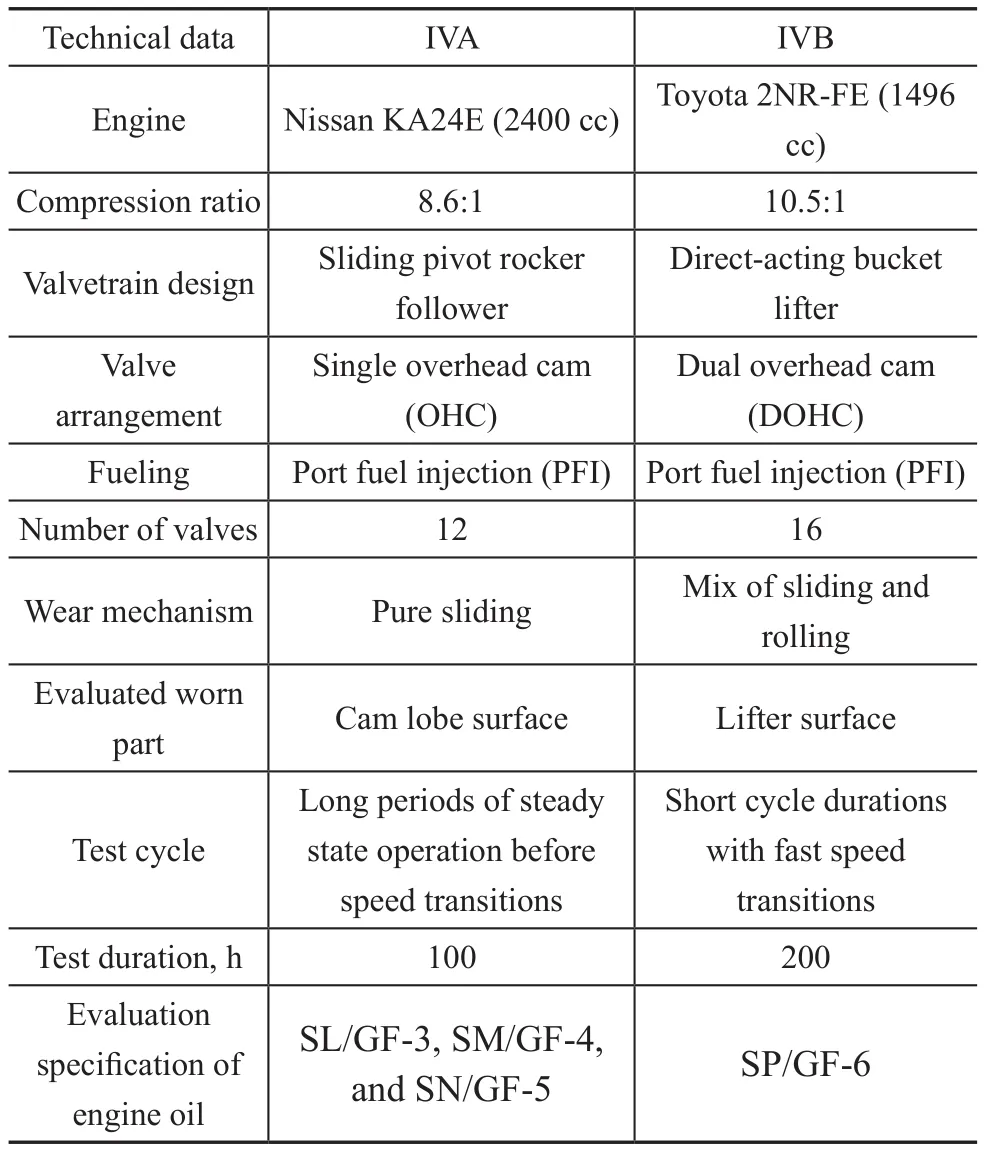
Table 3 Technical data of Sequence IVA and IVB
The sequence IVB engine test results of the three engine oils are presented as follows: For the prototype GF-6 oil 1, the camshaft failure happened at 195 h during the IVB engine test; for the prototype GF-6 oil 2, it displayed better antiwear performance than GF-6 oil 1. The average volume loss of intake lifter lubricated by the GF-6 oil 2 was 2.5 mm3,thus confirming the effectiveness of improved detergent composition for anti-wear performance. For the reference oil A, the average volume loss of intake lifter was 2.8 mm3.
Total base number (TBN) indicates the ability of oil to neutralize the organic acids produced by self-oxidation and acidic substances produced by degradation of engine oil. Usually the higher the TBN value of an engine oil, the better the neutralization and detergency. In the process of using internal combustion engine oil, the change of total base number can reflect the consumption of additives,especially the detergent in lubricating oil.
Figure 7 shows the change of total acid number (TAN),TBN, and iron element content for the three aged engine oils during sequence IVB engine tests. For the severe condition of sequence IVB test, the TBN of test oil decreases sharply with the increase of time. At the end of the test, TBN is roughly decreased to zero. At the end of the tests, the TAN of the three oils had approached 4 mg KOH/g. The results of Figure 7 show that the detergent consumption of engine oils at the Sequence IVB test is very significant. Upon comparing the iron content of the three oils at EOT (end of test), the prototype GF-6 oil 1,which met a failure of camshaft at final period of the test,had the highest iron content, while the prototype GF-6 oil 2 had the lowest iron content. So this result could directly reflect the wear situation of cam and lift. Iron content is positively correlated with the wear degree of cam tappet.The difference between the base number and the acid value of oil is often used to quantitatively reflect the degradation of aged oil. After intersection of base value line and acid value line of aged oil, the aged oil cannot effectively neutralize the produced acidic components, and the aging of engine oil is aggravated after the crossing point. The occurrence time of the intersection of base and acid numbers corresponds well with the increase of wear of cam tappet.
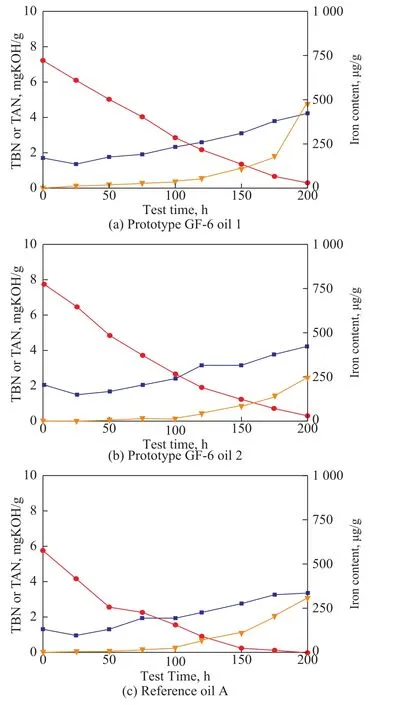
Figure 7 Change in TAN, TBN, and iron element content for the aged engine oils during sequence IVB engine tests
Figure 8 shows the changes of oxidation value at FTIR 5.8 peak area and nitrification value at FTIR 6.1 peak area of the three test oils during the IVB tests. Oil products can be oxidized to form many compounds consisting of mainly carbonyl compounds under high temperature and aerobic conditions. The oxidation value determined by the infrared spectroscopy can reflect the oxidative deterioration of engine oil. Nitrification of oil is caused by the reaction of nitrogen oxides produced during the combustion in engine. Figure 8(b) shows that the nitrification value of test oil is not high as a whole, indicating that nitrification of oil is not serious in the IVB engine test. The Falex test after aging of test oil can better reflect the actual working conditions of the IVB engine test and has a good correlation with the IVB test. The introduction of aging factors into laboratory simulation test is helpful to the development of the advanced engine oil formulations.
The wear on the lifter surfaces for GF-6 oil 2 at the sequence IVB engine test was measured using a Keyence VR3000 3D microscope. Prior to the start of each test, the pre-test lifters were imaged with the Keyence VR3000 3D microscope. The 3D microscope utilizes two sources of light and the diffraction patterns from surface reflections were applied to determine the proximity away from the sensor. It generates optical images, vertical profile, and the 3D image of the lifter surface (see Figure 9). The vertical position of the post-test lifter unworn surface was aligned with that of the pre-test lifter. The tappet surface shows signs of a normal wear pattern with light concentric circular marks and radial lines.

Figure 8 Oxidation and nitration change for the aged engine oils during sequence IVB engine tests

Figure 9 Typical optical images and overlaid pre- and post- surface profiles of tappet for GF-6 oil 2 at sequence IVB engine test
4 Conclusions
This paper has described the research on the anti-wear performance of the newly developed GF-6 0W-20 engine oil that complies with ILSAC GF-6 specification. The anti-wear performance of the aged candidate GF-6 engine oils may use laboratory bench test rigs of Falex Pin & Vee blocks and HFRR to predict the oils' results of sequence IVB engine test. The XPS analysis is a very effective method for analysis of the worn surface. The remarkable anti-wear performance of the developed GF-6 engine oil was also confirmed in the Sequence IVB test. The results indicate that by appropriately selecting and balancing the calcium detergent additives the wear loss of cam and tappet at the Sequence IVB test at low temperature may be significantly reduced. The occurrence time of the intersection of the base number and the acid value corresponds well with the increase of wear of cam tappet of the IVB engine test.
Acknowledgements:This work was financially supported by the Research Project of China Petrochemical Corporation(SINOPEC 114005).
杂志排行
中国炼油与石油化工的其它文章
- Effect of the Morphology of ZnO Support on the Desulfurization and Regeneration Performance of Ni/ZnO Catalyst
- Optimization of Dividing Wall Column with Heat Transfer Process Across the Wall for Feed Properties Variation
- Methane Storage and Synthesis of HKUST-1 Prepared with Different Solvent
- Research on Hydrogenolysis of Glycerol to 1, 2-Propylene Glycol by Using Supported Raney-Cu/Al2O3
- Synthesis of Nanosized SSZ-13 Zeolite and Performance of Its Mixed Matrix Membrane for CO2/CH4 Separation
- Intelligent Transformation and Upgrading of Oil Refining& Petrochemical Industries in China: Investigation &Application
